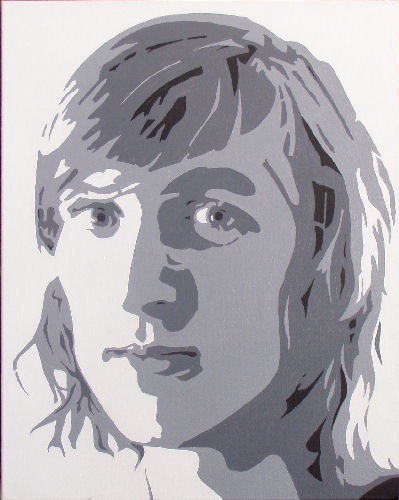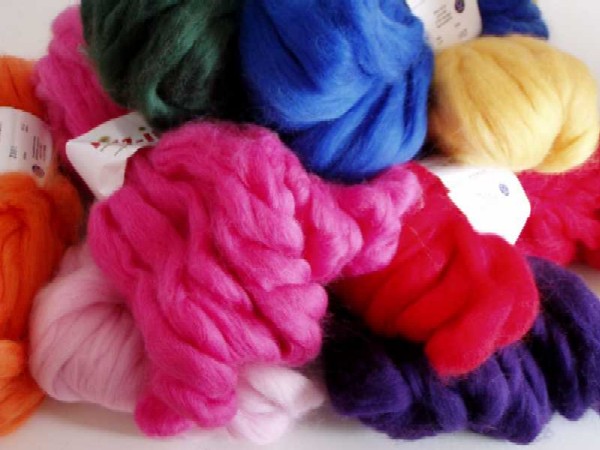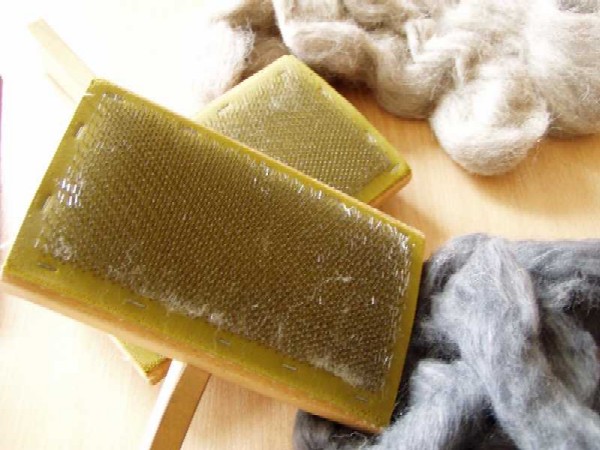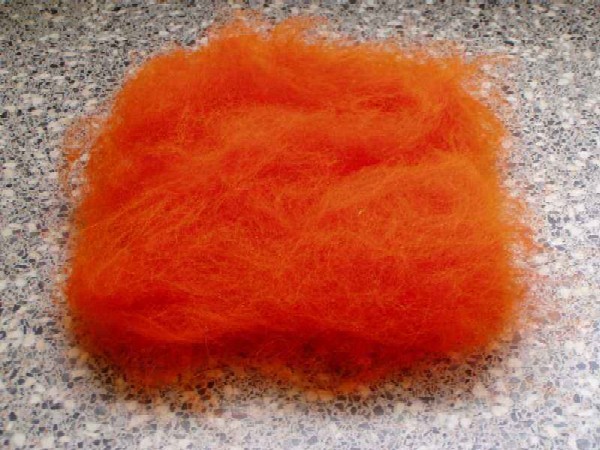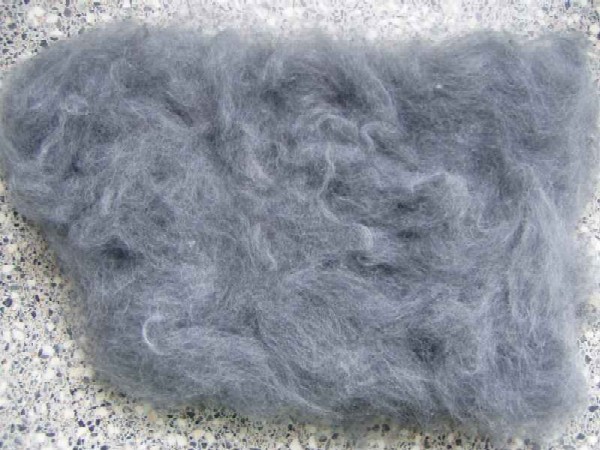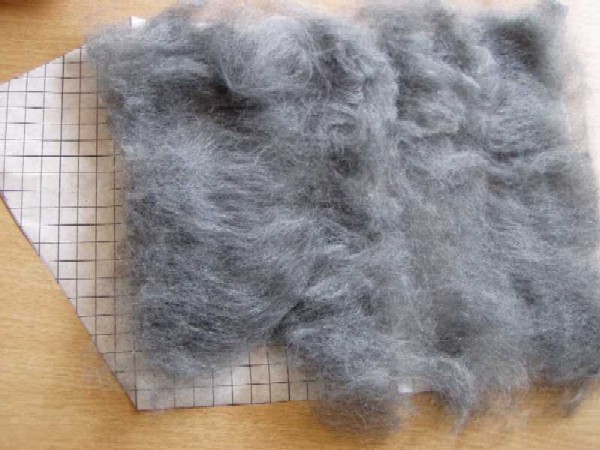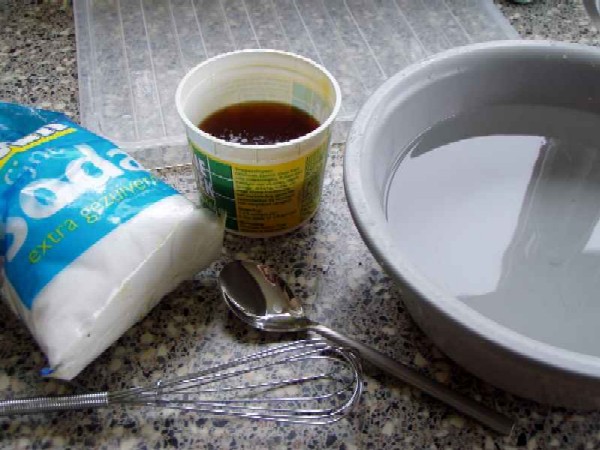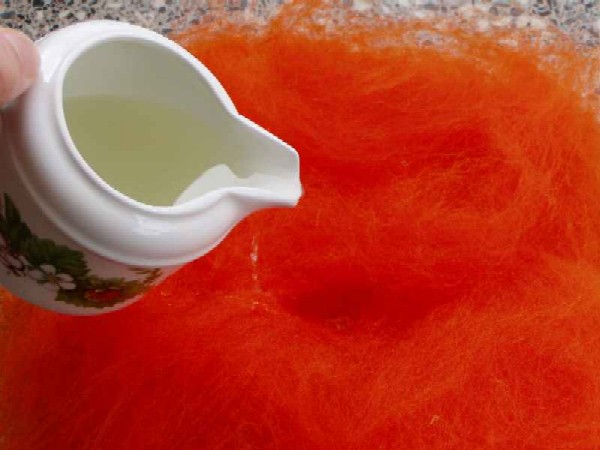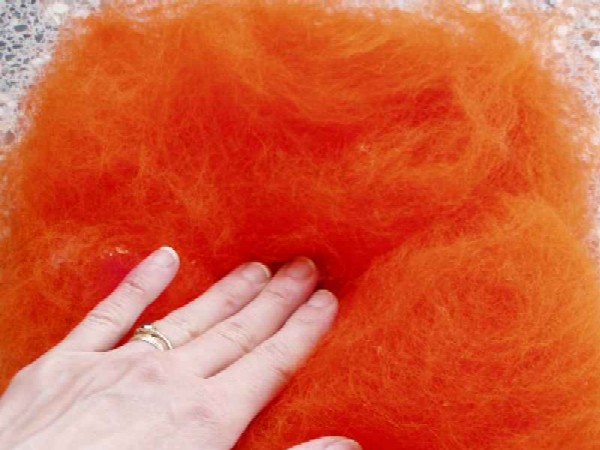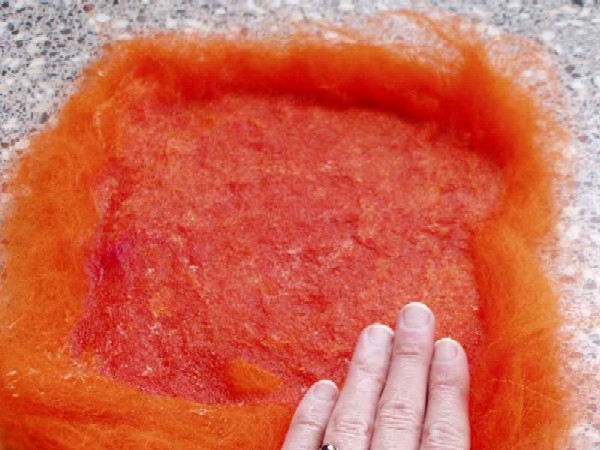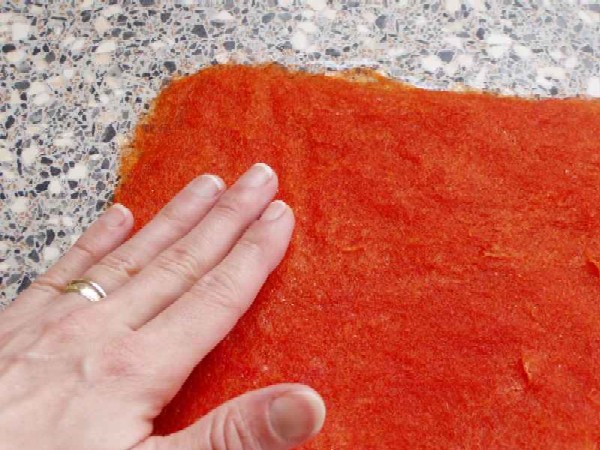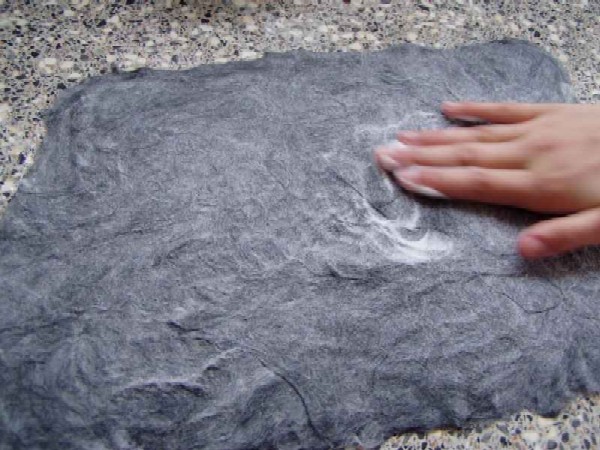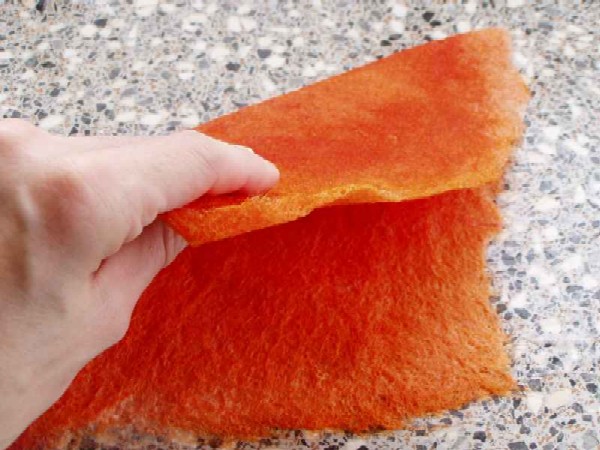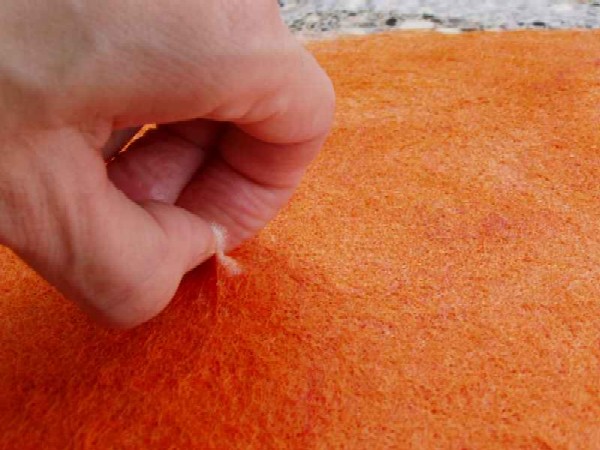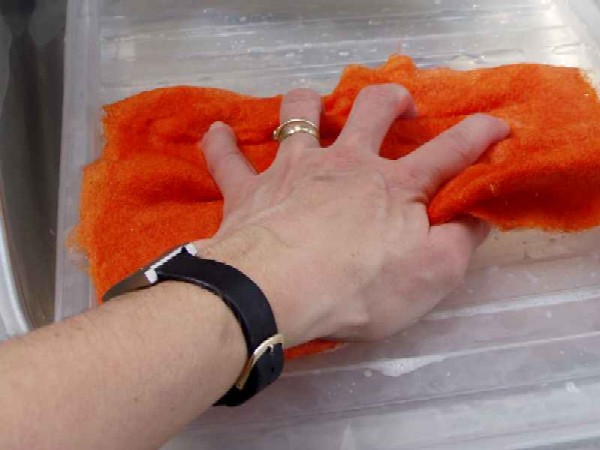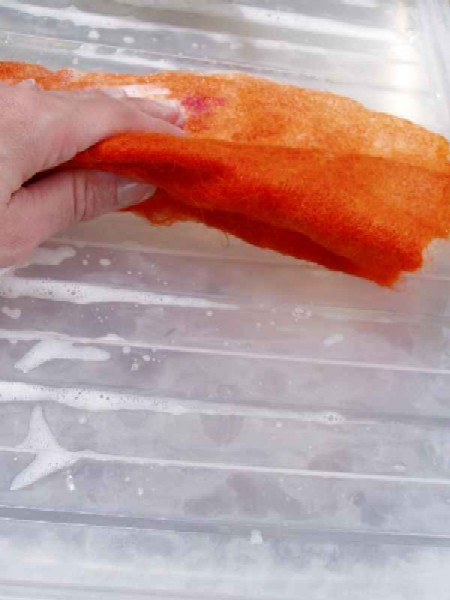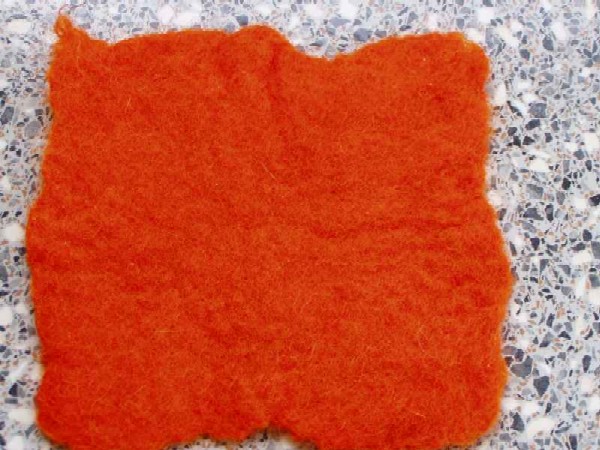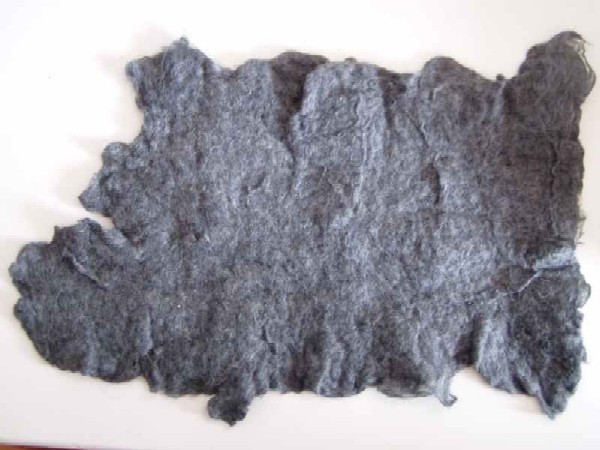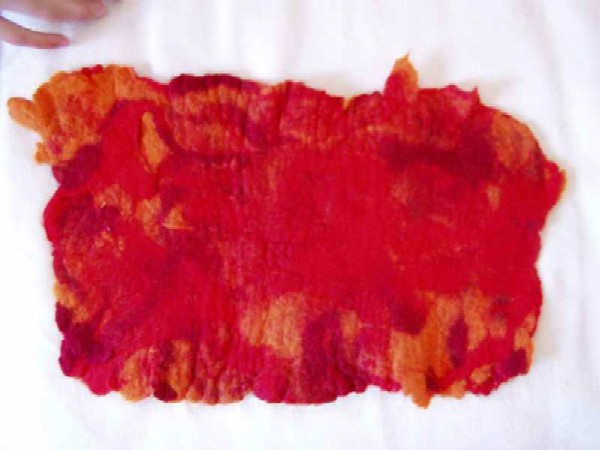While it's better to card this roving or fleece, especially if it's somewhat compressed or twisted, you can also work without it. However, you'll need to make sure to pay attention and remove any thicker pieces by separating them until they are as airy as the rest.
|
For a sample piece, we layer various layers of wool on top of each other. We do this in different directions to make the felt as strong as possible. How thick you make it is a matter of trial and error and what you intend to do with it. Make sure you have at least 2 layers of wool on top of each other, one in each direction, otherwise, your piece won't be strong enough.
|
Here we have placed the fleece on a mold. The mold is larger than the final size we want because the felt shrinks during the process. Take into account a shrinkage of 30% to 50%. Once the mold is completely covered, we remove it from underneath and carefully place the fleece on the countertop. We now need to felt this fleece, and it's best done on the countertop because it can get quite wet.
|
We're preparing a solution to wet the entire fleece. Here's how you make the solution: Take 2 liters of lukewarm water, around 45 to 50 degrees Celsius, so you can still comfortably put your hands in it. Add 2 tablespoons of soda to soften the water. Make sure the soda is completely dissolved using a whisk or spoon. Once done, add a generous tablespoon of soft soap from a tub. Don't use more than that. Dissolve the soap thoroughly in the solution. Keep the solution warm on a tea light or a warming plate.
|
| Now we're going to pour the solution onto the fleece starting from the center. |
| Press the fleece down firmly, without rubbing, and keep moistening your hands in the solution to prevent the wool from sticking to them. |
| All we're really doing is pushing the air out of the fleece. Work from the inside out. |
| Try to keep the edges nice and straight. |



